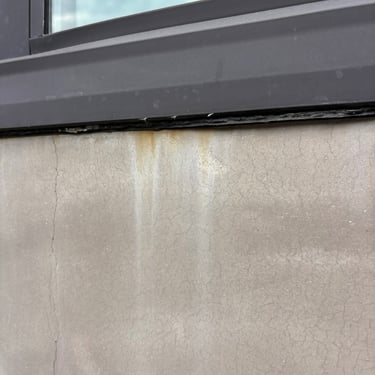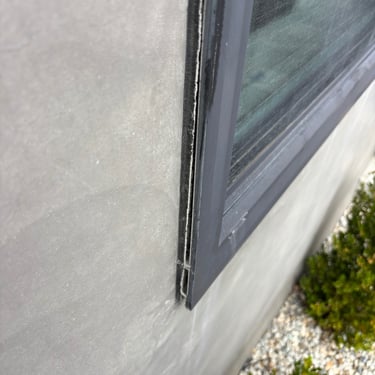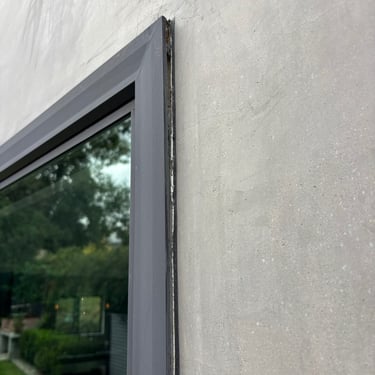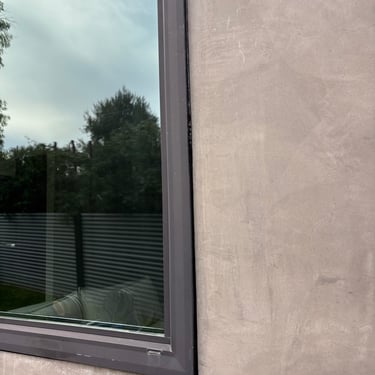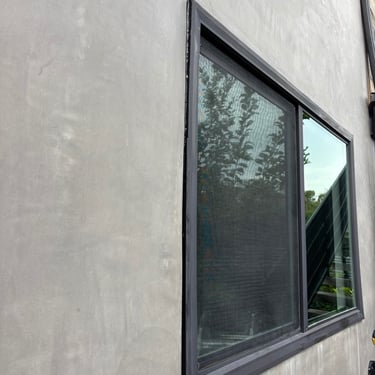Why Exterior Window Silicone Matters: Preventing Leaks and Protecting Your Home in Los Angeles
Windows are one of the most vulnerable areas of any home’s exterior. Even a new, properly installed window can leak if the exterior silicone seal has failed. In Los Angeles, homeowners face this problem more often than they expect: heat, UV exposure, temperature swings, seasonal rains, and natural building movement all contribute to the breakdown of exterior caulking.
WATER, FIRE, MOLD DAMAGERESTORATIONOUTDOOR WORKOUR WORKS
11/20/20253 min read
Recently, we inspected a home where the client noticed water leaking inside during heavy rain. After a full evaluation, we discovered that the exterior silicone around the window had completely deteriorated, leaving open gaps between the frame and the stucco. This allowed rainwater to enter the wall cavity and eventually appear inside the home.
In this article, we explain why exterior caulking is so important, what causes it to fail, how to diagnose problems, and how proper resealing protects your home from costly damage.
⸻
Why Exterior Silicone Is Critical
The silicone around your window isn’t just a finishing touch — it’s your home’s first line of defense against:
• Rainwater penetration
• Moisture entering stucco or siding
• Stucco cracks and delamination
• Mold growth inside walls
• Wood framing rot
• Interior wall damage
• Increased energy loss
A properly applied, continuous bead of high-quality silicone keeps water from entering gaps around the window frame.
⸻
Why Exterior Silicone Fails Over Time
In Los Angeles, exterior caulking is constantly exposed to harsh conditions:
1. UV and Extreme Heat
Intense sunlight dries out and cracks silicone faster than in cooler climates.
2. Building Movement
Stucco walls and aluminum window frames expand and contract at different rates. Poor-quality or old silicone tears under movement.
3. Original Installation Mistakes
Thin application, wrong type of silicone, poor surface preparation — all common issues we see in new construction.
4. Temperature Changes + Winter Rain
Heat expands materials; cold contracts them. Add moisture, and old silicone quickly separates from the surface.
⸻
Signs Your Window Silicone Needs Replacement
Common symptoms we see during inspections:
• Visible cracks or gaps along the window perimeter
• Hardened or crumbling silicone
• Missing sections of caulking
• Yellow or rusty streaks on the stucco under the window
• Stucco cracks radiating from the frame
• Water or moisture inside the home
• Drafts around the window
On the project shown in the photos, the old silicone was fully separated from the frame, leaving long, open gaps. Rainwater was entering directly behind the stucco.
⸻
Why Failed Silicone Is Dangerous
Water is the most destructive force for any building. Ignoring damaged caulking leads to:
1. Mold Growth Inside the Wall
Often invisible for months until the smell becomes noticeable.
2. Wood Framing Rot
This turns a small caulking repair into a major structural renovation.
3. Stucco Damage and Cracking
Moisture trapped behind stucco causes expansion, separation, and surface cracking.
4. Rust and Corrosion of Window Components
Metal parts deteriorate, eventually affecting window operation.
5. Increased Humidity and Energy Loss
Moisture makes the home feel colder or hotter and forces HVAC systems to work harder.
A small leak today can become a several-thousand-dollar repair tomorrow.
⸻
How We Reseal Exterior Windows Properly
Replacing exterior silicone is more than just “adding a bead on top.” For long-lasting results, the work must be done professionally and methodically.
Step 1 — Inspection
We check:
• All sides of the window
• Stucco condition
• Areas of movement
• Gaps or voids behind the frame
• Any signs of water penetration
Step 2 — Removing Old Silicone
Old caulking must be fully removed. Applying new material over the old one will not bond or protect against water.
Step 3 — Cleaning and Preparation
We clean:
• Dust
• Loose stucco
• Silicone residue
• Rust
• Organic material
Step 4 — Applying New UV-Resistant Exterior Silicone
We use a professional-grade exterior silicone suitable for stucco and aluminum frames.
It remains flexible, UV-resistant, and watertight for years.
Step 5 — Final Waterproofing Check
We confirm:
• Full adhesion
• Smooth continuous bead
• No gaps or voids
• Correct bonding to both surfaces
⸻
How Often Should Exterior Caulking Be Replaced?
In Los Angeles:
• Ideal interval: every 5–7 years
• South-facing walls with heavy sun exposure: every 3–4 years
Regular inspection can prevent most leaks before they start.
⸻
When You Should Call a Professional Immediately
• Water already enters the home
• Yellow/rust streaks under a window
• Visible separation between stucco and frame
• Cracks around the window after rain
• Drafts or moisture on the interior wall
• Old caulking is completely missing on one or more sides
Delaying repairs increases the risk of mold and framing damage.
⸻
Cost of Exterior Window Resealing in Los Angeles
Pricing depends on window size, condition, height, and access.
Average rates:
• Standard window — from $200
• Large or high-access windows — $350–450
• Windows with stucco repairs — priced individually
Resealing is one of the most cost-effective waterproofing services a homeowner can do.
⸻
Conclusion
Exterior window silicone is a small detail that plays a major role in protecting your home. When it cracks or fails, water finds its way behind the stucco and into the framing — leading to mold, structural damage, and costly repairs.
Regular maintenance and timely resealing ensure:
• Maximum waterproof protection
• Longer life of window framing
• Damage-free stucco
• Lower energy bills
• A dry, healthy home
If your window caulking shows signs of wear, it’s best to address it before the rainy season.
⸻
Need help with window sealing or leak inspection?
We provide professional exterior silicone replacement, window waterproofing, and leak diagnostics throughout Los Angeles.
📞 818-401-7766
ProHands Handyman — expert home repair and maintenance in LA.

